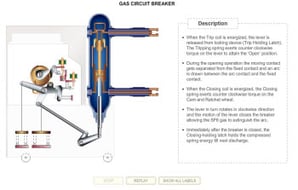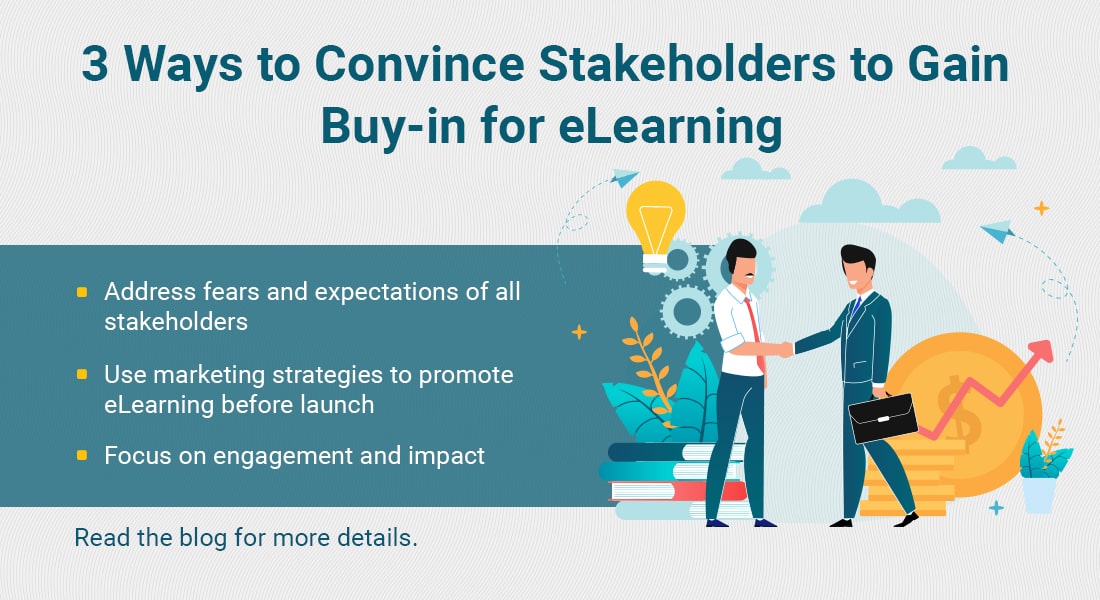3 Quick Questions on E-learning Level, Strategy and Constraints

In my earlier blog I talked about 5 questions that we need to ask your eLearning stakeholders to help them make the decision.
Here are the 3 questions that will give an in-depth understanding of what a stakeholder is looking for and help to give the right solution that matches their eLearning requirement.
→ Download Now: State of Learning (Now and Beyond) [eBook]
1. Do you have any instructional approach in mind that you want to implement in the course?
We need to check with stakeholders whether they already have any instructional design concepts in mind that they wish to implement in their eLearning course.
For example, one of our clients wanted to develop a course on “Preventing the spread of germs ” that can cause flu and he wanted to have an avatar explaining the role of antibody in it. This is how we created an avatar to meet his requirements.

And if they don’t have any specific strategy in mind, then we can suggest creative instructional design strategies based on the course objectives and content type.
For example, if it is a legal or compliance course or any other course with an objective of improving the skills of employees, then a scenario or a case-study approach can be of great value.

2. What level of eLearning design do you wish to have for your course?
It could be better if we can provide some basic information on the level of interactivities that can be used in eLearning, so that stakeholders can choose the level of interactivity for their course.
Here is the level of interactivity with examples.
Level 1:
 Courses with minimum learner interactions. developed in HTML and without audio narrations can be quickly developed at a lesser cost.
Courses with minimum learner interactions. developed in HTML and without audio narrations can be quickly developed at a lesser cost.
Level 2:
 If the course is aimed at skill development or teaching learners a concept then animations and simulations of limited complexity can be used to make it engaging.
If the course is aimed at skill development or teaching learners a concept then animations and simulations of limited complexity can be used to make it engaging.
Level 3:
 If the course is aimed at skill development or aims to teach highly technical content, then we need to include several practice exercises and complex interactive self-checks (The animations should be complex detailed.)
If the course is aimed at skill development or aims to teach highly technical content, then we need to include several practice exercises and complex interactive self-checks (The animations should be complex detailed.)
At this stage, we came to know whether the course needs voiceover or not. For Level 1 course, narration is optional but for Level 2 and 3 courses we need to use narration in the course to give a lively nature to the course.
3. Do you have a rough estimate of time and cost?
Once we collect the necessary data, we should also check with the stakeholders whether they have fixed any launch date for the eLearning course and formulated any specific budget that they wish to spend on this eLearning course. If they have not, then we should provide some rough estimate of time and cost based on the expected level of interactivity and instructional approach that is to be used in designing the eLearning courses.
This can help us to decide on the authoring tools to develop the courses
For example,
- eLearning on “Product Launch”, would have a very a strict timeframe to achieve and with basic level of interactivity and hence within the economical cost.
- A course on “Performance Appraisal for Managers” may need a higher level instructional approach, time and cost would not be a great constraints.
By asking these questions and giving them the necessary information, we can guide the prospects to choose the right authoring tool, instructional design principles, visual strategy, narration and level of interactivity than can be used for their eLearning courses.





